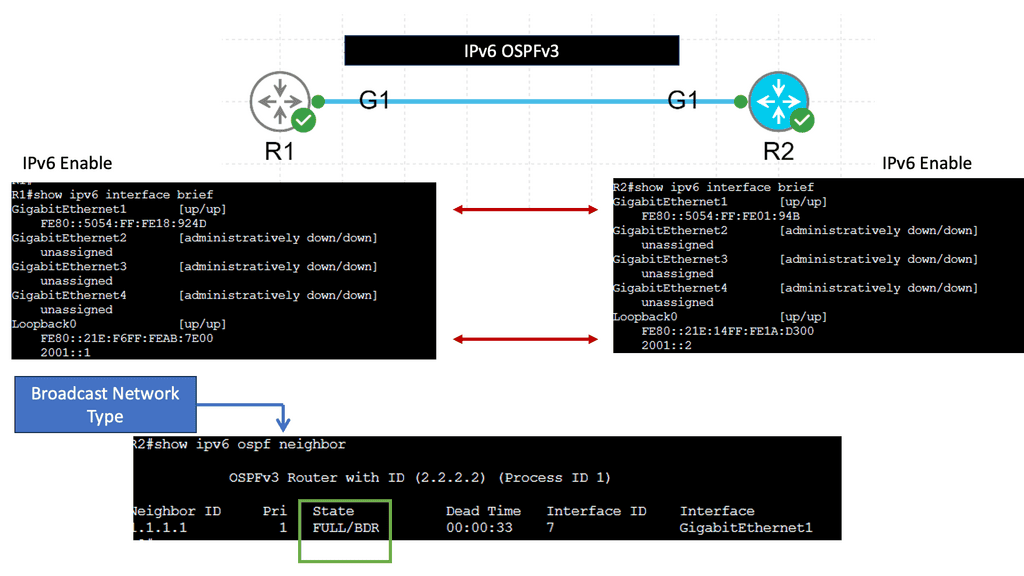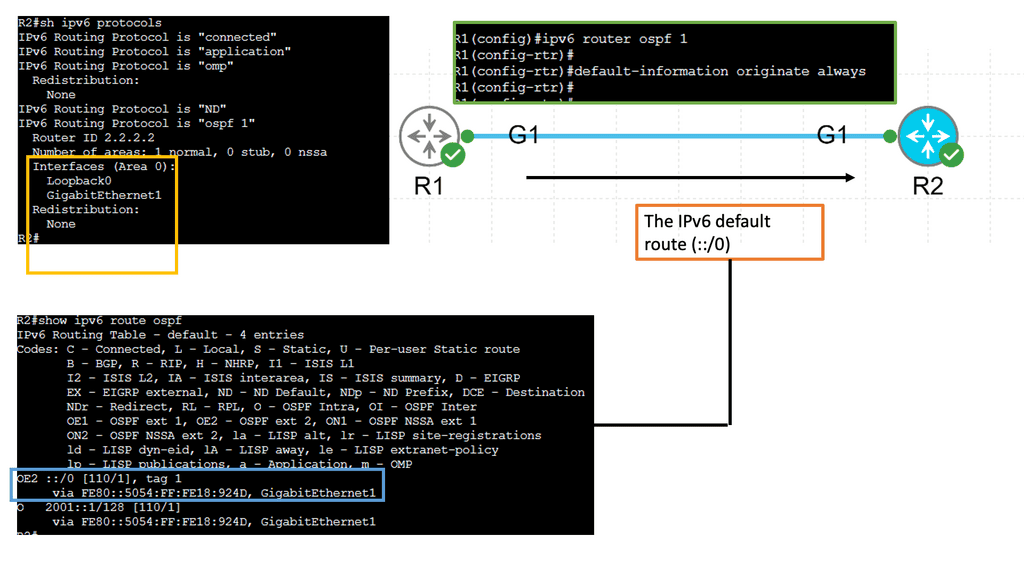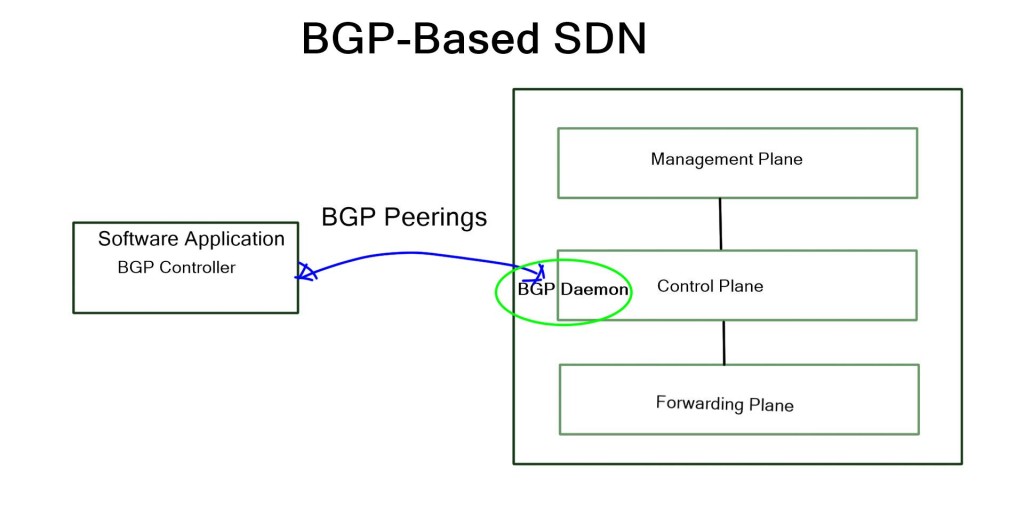SDN Router
In the ever-evolving world of networking, innovation plays a crucial role in driving efficiency and flexibility. One such groundbreaking technology that has gained significant momentum in recent years is Software-Defined Networking (SDN). At the heart of this transformative approach lies the SDN router, a key component that promises to revolutionize network infrastructure. In this blog post, we will explore the concept of SDN routers, their benefits, and their impact on network management and performance.
SDN routers are the backbone of Software-Defined Networking. Unlike traditional routers, which rely on static configurations, SDN routers separate the control plane from the data plane. This decoupling allows for centralized network management and enables dynamic and programmable control over network traffic flows. By leveraging open protocols, such as OpenFlow, SDN routers provide a level of flexibility and agility that was previously unimaginable.
Enhanced Scalability: SDN routers facilitate seamless scalability by abstracting the underlying physical infrastructure. Network administrators can easily add or remove virtual network functions, making it simpler to accommodate growing network demands.
Simplified Network Management: With the centralized control plane, SDN routers streamline network management tasks. Administrators can define and enforce network policies from a single point, simplifying configuration, monitoring, and troubleshooting processes.
mproved Network Performance: SDN routers enable intelligent traffic engineering and load balancing. By dynamically redirecting traffic based on real-time conditions and application needs, network performance and efficiency are significantly enhanced.
Data Centers: SDN routers find extensive application in data center environments. They enable efficient virtual machine migration, facilitate workload balancing, and ensure optimal utilization of network resources.
Wide Area Networks (WANs): In WAN deployments, SDN routers offer centralized control and visibility, making it easier to manage geographically dispersed networks. They enhance security, simplify policy enforcement, and enable seamless integration of multiple service providers.
Internet of Things (IoT): The scalability and flexibility of SDN routers make them ideal for IoT deployments. They provide efficient connectivity, intelligent traffic routing, and support for various IoT protocols, enabling seamless integration of diverse devices and applications.
The rise of SDN routers marks a paradigm shift in network infrastructure. By decoupling the control and data planes, these routers unlock unprecedented levels of flexibility, scalability, and performance. With benefits ranging from simplified network management to enhanced scalability and improved traffic engineering, SDN routers are poised to transform the way we design, deploy, and manage networks. As organizations embrace digital transformation, SDN routers will continue to play a vital role in shaping the future of networking.
Matt Conran
Highlights: SDN Router
SDN routers serve as the crucial building blocks of Software-Defined Networking. Unlike traditional routers, they separate the control plane from the data plane, enabling centralized network management and programmability. By decoupling these two planes, SDN routers empower network administrators with unprecedented flexibility and control over network traffic.
SDN routers incorporate cutting-edge features that set them apart from their conventional counterparts. These routers leverage OpenFlow, a key protocol in the SDN ecosystem, to manage and direct network traffic flows. With granular flow control, quality of service (QoS) prioritization, and dynamic traffic engineering, SDN routers optimize network performance and enhance overall efficiency.
**Benefits of SDN Routers**
1. Enhanced Network Agility: By centralizing the control plane, SDN routers provide network administrators with complete visibility and control over the network. This enables them to quickly adapt to changing network requirements, allocate resources efficiently, and respond to real-time security threats.
2. Simplified Network Management: SDN routers simplify network management by providing a single interface for configuring, monitoring, and troubleshooting the network. By programmatically defining network policies, administrators can automate routine tasks and reduce the complexity associated with traditional router configurations.
3. Scalability and Flexibility: SDN routers offer unparalleled scalability, allowing networks to grow and efficiently accommodate increasing traffic demands. With programmable routing policies and traffic engineering capabilities, SDN routers enable dynamic network provisioning, ensuring optimal resource utilization and performance across the network.
4. Improved Security: SDN routers provide enhanced security features like fine-grained access control and traffic isolation. By centralizing security policies and implementing them consistently across the network, SDN routers mitigate security risks and provide a robust defense against potential threats.
**Real-world Applications**
SDN routers have found wide-ranging applications across various industries. Some notable examples include:
1. Data Centers: SDN routers enable agile and efficient management of large-scale data center networks. By abstracting network control from the underlying physical infrastructure, administrators can create virtual networks, provision resources on demand, and implement fine-grained security policies.
2. Wide Area Networks (WAN): SDN routers offer significant advantages in WAN environments. They enable network administrators to optimize traffic routing, dynamically allocate bandwidth, and prioritize critical applications, improving network performance and reducing costs.
3. Internet Service Providers (ISPs): SDN routers empower ISPs to deliver innovative services and offerings to their customers. With programmable routing policies, ISPs can offer tailored services, implement Quality of Service (QoS) guarantees, and ensure optimal utilization of network resources.
A Key Points: Changing the network paradigm
The success of SDN makes it clear that operators want to manage networks in a centralized and programmable way. Operating with a central viewpoint brings many advantages to existing networks and significantly enhances traffic engineering capabilities for a new data center design guide. However, changing the network paradigm with brand-new technologies comes at an operational and security cost.
OSPF SDN
The Role of Fibbing with OSPF
Fibbing is an OSPF SDN mechanism that controls the forwarding behavior of an unmodified router-speaking OSPF without losing the benefits of distributed routing protocols. It combines the centralized approach of SDN with the advantages of traditional link-state protocols. The workings originate from a combined approach between Princeton University and ETH Zurich. The controller code is available on Github, found at this link.
Fibbing is a technique that offers direct control over the router’s forwarding by manipulating the distributed routing protocol. The solution works on the concept of lying or fibbing to the router to make more effective routing control decisions. In addition, it makes OSPF more flexible by adding central control over distributed routing. OSPF operates as usual with shortest path routing, and Fibbing introduces methods to trick the router into computing any path it wants.
Traditional Routing vs Routing Control
The routing algorithms implemented by routers are decentralized. They communicate and converge toward the best routing path over time. Once a router fails or is added to the network, the network self-heals and again converges towards the best routing path.
An SDN implements centralized routing, meaning that a central controller knows where all the switches and end hosts are and can map the shortest path across the network. The controller will then install rules on the switches that allow flows to traverse that path without further interaction with the controller (the controller typically sees the first packet).
To communicate with your neighboring network, you still need a router on the border of an SDN network. Your SDN controller can’t know about their network, nor can it write permissions to their switches.
**Traditional Routing: The Old Guard of Network Management**
Traditional routing relies on a distributed architecture where routers independently make decisions based on protocols like RIP, OSPF, and BGP. These routers use pre-defined algorithms to determine the best path for data transmission, considering factors such as hop count, bandwidth, and delay. While this method has proven reliable over the years, it often lacks the flexibility and adaptability needed in today’s dynamic network environments. The distributed nature can lead to longer convergence times and is less adept at handling rapid changes in network topology.
**Routing Control in SDN: A Paradigm Shift**
Enter Software-Defined Networking, a revolutionary approach that separates the control plane from the data plane, centralizing network intelligence. In SDN, routing control is managed by a centralized controller that has a global view of the network. This allows for more dynamic and efficient routing decisions, adapting quickly to network changes and optimizing paths based on real-time data. SDN’s programmability means that new routing protocols and policies can be implemented without the need for hardware changes, offering unparalleled flexibility.
**Comparative Advantages: Traditional vs. SDN Routing**
When comparing traditional routing and SDN routing control, several key differences emerge. Traditional routing is known for its robustness and stability, qualities developed over decades of use in various environments. However, it can be rigid and slow to adapt. In contrast, SDN offers agility and rapid adaptability, making it ideal for environments that require frequent updates and changes. The centralized control of SDN also enables better network management and security, as policies can be quickly enforced across the entire network.
**Challenges and Considerations**
Despite its advantages, SDN is not without challenges. The centralized nature can be a single point of failure, and the initial setup can be complex and costly. Organizations must weigh these factors against the potential for improved network performance and flexibility. On the other hand, sticking with traditional routing may mean missing out on the benefits of modern network innovation. It’s essential for businesses to evaluate their specific needs and network demands when deciding between these approaches.
Example Routing Technology: OSPFv3
**The Evolution from OSPFv2 to OSPFv3**
OSPFv3 is essentially an adaptation of OSPFv2 to support IPv6. While OSPFv2 was designed for IPv4 networks, the shift to IPv6 necessitated a protocol capable of handling its expanded address space and improved capabilities. One of the significant changes in OSPFv3 is its ability to separate protocol and address families, allowing for more flexibility and scalability. This evolution not only supports IPv6 but also maintains backward compatibility with IPv4, ensuring a seamless transition for organizations upgrading their network infrastructure.
**Key Features of OSPFv3**
OSPFv3 introduces several new features that make it a robust choice for modern networks. One notable feature is its support for multiple instances per link, which allows for more granular control and segmentation of network traffic. Additionally, OSPFv3 employs a link-local address for neighbor discovery, enhancing security and reducing overhead. Another critical enhancement is the use of IPv6’s inherent security features, such as IPsec, which provides built-in authentication and encryption capabilities. These features collectively make OSPFv3 a powerful and secure routing protocol for IPv6 environments.
For additional pre-information, you may find the following helpful:
SDN Router
Highlighting SDN
Software-defined Networking (SDN) involves separating routing control from the individual network elements and putting it in the hands of a centralized control layer. For instance, an SDN such as OpenFlow lets you choose the correct forwarding information per flow.
This means there need not be any separation on a VLAN level within a data center to enforce traffic separation between tenants. Instead, the controller would have a set of policies that only allow the traffic from within one “VLAN” to be forwarded to other devices within that same “VLAN” on a per source/destination (or flow) basis.
SDN Router: OSPF SDN
OSPF is still destination-based forwarding, meaning a device will forward all packets with the same destination address to the next hop. Paths are computed as the shortest path over a shared weighted graph. The Fibbing mechanism does not try to change OSPF default behavior. However, the mechanisms involved in the solution enable the forwarding of different flows destined for the same destination over different paths, increasing link utilization and the total available bandwidth. The controller introduces fake nodes and links through standard routing protocol messages.
OSPF SDN: How can I use existing protocols to program my network with SDN?
Routing protocols are an excellent API for programming a router’s state. Vendors may incorporate different implementations and CLI contexts, but they all speak the same protocol and follow RFC guidelines. Routing protocols are well known, and their behaviors have been studied for years.
Vendors have enhanced and optimized OSPF differently, but its framework does not change. They are using OSPF in the context of SDN leverages over 25 years of solid engineering. Combining SDN with existing routing protocols to enhance forwarding behavior is not new.
The first solution was the routing control platform (RCP), proposed by Princeton University and AT&T Labs-Research. The RCP solution has an IGP viewer and a BGP function to provide a central function. More recently, P. Lapukhov & E. Nkposong proposed a centralized routing model and introduced the concept of BGP SDN.
Petre solution uses a BGP controller to manipulate BGP parameters (Local Preference) and influence forwarding. It enables networks to run only BGP routing with enhanced traffic behavior.
How do you move traffic over a less congested link?
With OSPF-TE, you can change the cost or deploy some other 3rd party product, which is potentially expensive. If you want to change the forwarding state and don’t want to configure complex nested route maps or policy-based routing (PBR), the only remaining resource available to you is the routing protocol.
Fibbing is limited to the semantics of OSPF destination-based forwarding and is less potent than OpenFlow traffic optimizations. You can change the forwarding paths for specific prefixes, but OpenFlow doesn’t have total traffic engineering flexibility. However, you can use the solution with FlowSpec to gain extra granularity.
OSPF Forwarding Address
There are two ways to lie to a router: a Global lie and a Local lie.
Fibbing inserts an extra Type-5 LSA, allowing you to set a third-party next hop with the Forwarding Address (FA) feature. Type-5 LSAs are external link LSAs used to advertise external routes. They are flooded through the OSPF domain and point packets for those external addresses. The concept of an FA within a Type-5 LSA allows the selection of third-party next hops. The solution relies on third-party next hops to influence packet forwarding.
The FA is usually set to 0.0.0.0, meaning packets should be sent directly to the ASBR. In a Fibbing configured network, Type-5 LSA is injected with an FA to direct traffic to the destination at a better cost; the forwarding address is set with a specific address combined with a preferred metric. The costs can be tweaked to attract more or fewer people.
Influence Forwarding with Type5-LSA
There are two ways to influence forwarding with Type-5 LSA. One way is to have the forwarding address resolvable by ALL routers in the network. The FA is injected into the IGP, and all nodes can reach it. This method is used to make global decisions.
The other method is to have a locally known FA, influencing individual OSPF router decisions. For this, they create an FA for every next hop in the network, which has to be statically configured. On every router on your network, you need a static host route for each outgoing interface that you need to include for Fibbing. One fake static route per interface needs to be done once. If the FA is configured to be one of these, only that single router will use it.
Benefit: Not a Full SPF
The benefit of using a Type 5 LSA is that it does not cause a full SPF; it’s the distance vector part of OSPF. The impact is small and linear with the number of LSA. The team at Princeton and Zurich proposes that the Fibbing solution can scale to 100,000 Type-5 LSA.
Closing Points on SDN Routers
Unlike traditional routers, which rely heavily on physical hardware and manual configurations, SDN routers leverage software-based control. This shift allows for more dynamic, efficient, and responsive networking solutions. By decoupling the control plane from the data plane, SDN routers provide enhanced flexibility and programmability, enabling network administrators to manage network resources more effectively.
SDN routers bring a myriad of advantages to the table. One of the most significant benefits is the ability to automate network management tasks, reducing the need for manual intervention and minimizing human error. Additionally, SDN routers offer improved scalability, allowing networks to grow and adapt without significant hardware investments. Moreover, the centralized control provided by SDN technology results in better network visibility and the ability to implement advanced security measures more efficiently. These features make SDN routers an attractive option for businesses looking to future-proof their network infrastructure.
The impact of SDN routers can be seen across various industries. In telecommunications, SDN technology is transforming how service providers manage and deliver services, offering faster and more reliable connections. In the enterprise sector, companies are leveraging SDN routers to enhance their data centers, streamline operations, and support cloud-based applications. Educational institutions are also benefiting, using SDN to create flexible and secure campus networks that can adapt to the ever-changing technological landscape. These real-world applications highlight the versatility and potential of SDN routers to revolutionize networking.
Despite the numerous benefits, the adoption of SDN routers does come with its challenges. One of the primary concerns is the need for new skills and expertise to manage and operate SDN environments. Network professionals must be trained in the latest software-defined technologies to fully capitalize on these systems. Additionally, interoperability with existing legacy systems can be a hurdle, requiring careful planning and execution for seamless integration. Organizations must weigh these challenges against the potential rewards when considering a shift to SDN routers.
Summary: SDN Router
The demand for efficient and agile network infrastructure has become paramount in today’s rapidly evolving digital landscape. This is where Software-Defined Networking (SDN) routers come into play, revolutionizing how networks are managed and operated. In this blog post, we will delve into the world of SDN routers, exploring their capabilities, benefits, and the future they hold.
Understanding SDN Routers
SDN routers are at the forefront of network virtualization, separating control and data planes. Unlike traditional routers, which rely on dedicated hardware for routing decisions, SDN routers centralize control functions in software, providing a more flexible and scalable approach to network management.
Enhanced Scalability and Agility
SDN routers offer unprecedented scalability, allowing network administrators to allocate resources dynamically based on demand. With centralized control, network configurations can be rapidly deployed or modified, enabling organizations to adapt easily to evolving requirements.
Simplified Network Management
Gone are the days of manually configuring individual network devices. SDN routers provide a centralized management platform, allowing administrators to streamline network operations through automation and policy-based management. This simplifies troubleshooting, improves network visibility, and reduces the overall complexity of network management tasks.
Network Virtualization
SDN routers enable network virtualization, a powerful concept that allows the creation of multiple virtual networks on a shared physical infrastructure. This promotes efficient resource utilization and enhances security by isolating different network segments, ensuring that traffic remains isolated and secure.
Network Segmentation
SDN routers facilitate network segmentation, enabling organizations to divide their network into smaller, logically separated segments. This segmentation enhances security by restricting unauthorized access and containing any potential breaches within a specific segment, minimizing the impact on the entire network.
Conclusion
SDN routers have emerged as game-changers in network infrastructure. Their ability to centralize control, enhance scalability, simplify management, and enable virtualization and segmentation makes them a compelling choice for modern organizations. As the demand for flexible and agile networks continues to grow, SDN routers are poised to play a pivotal role in shaping the future of network infrastructure.




